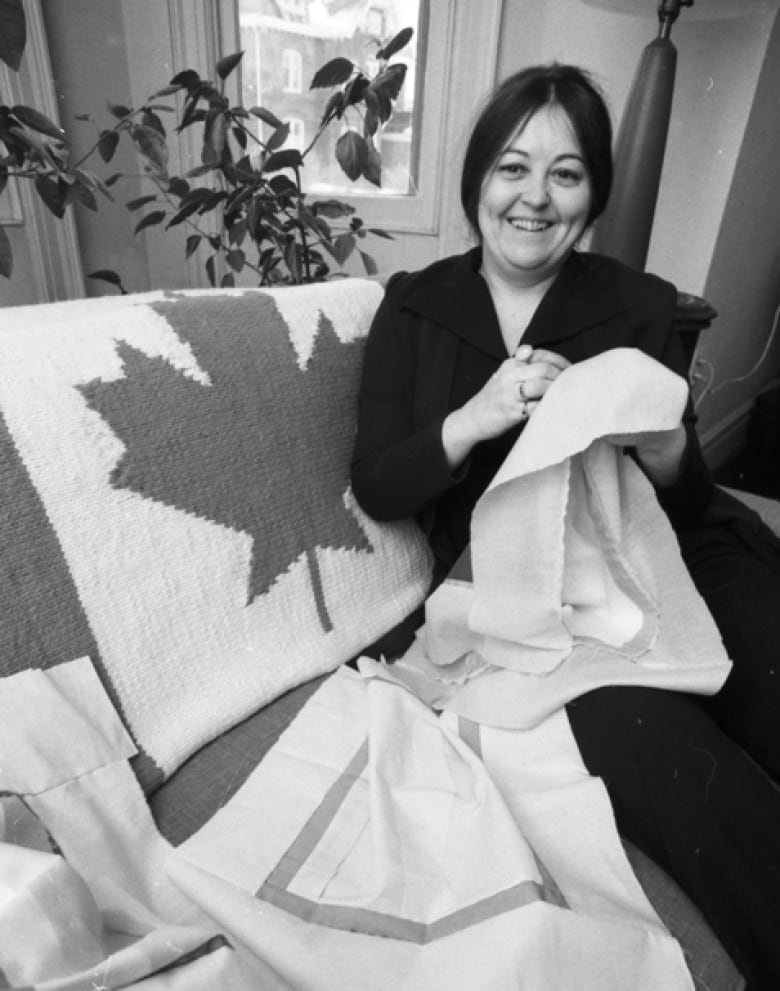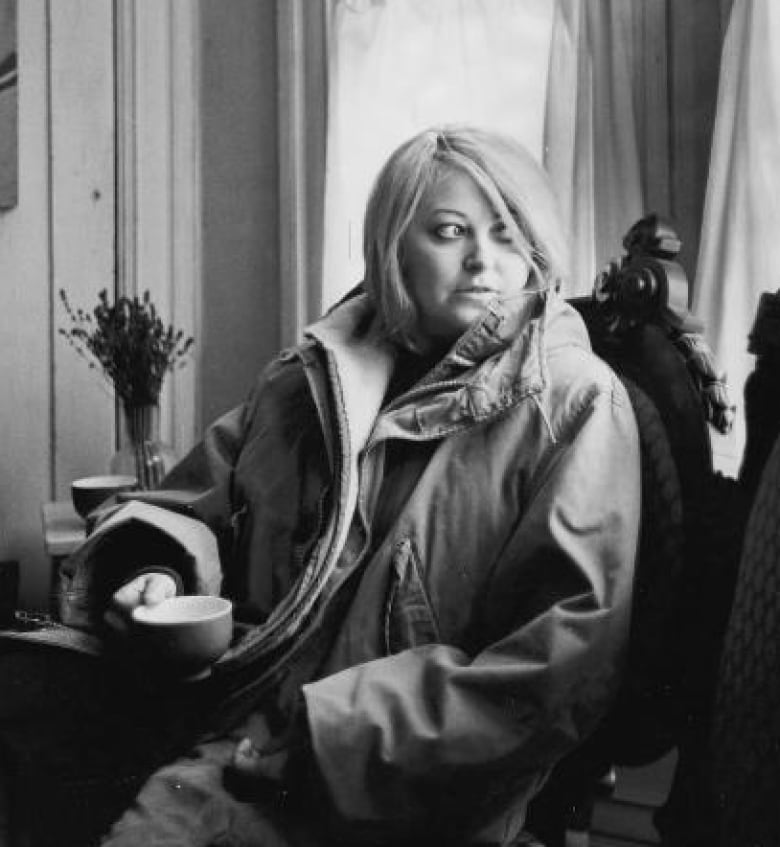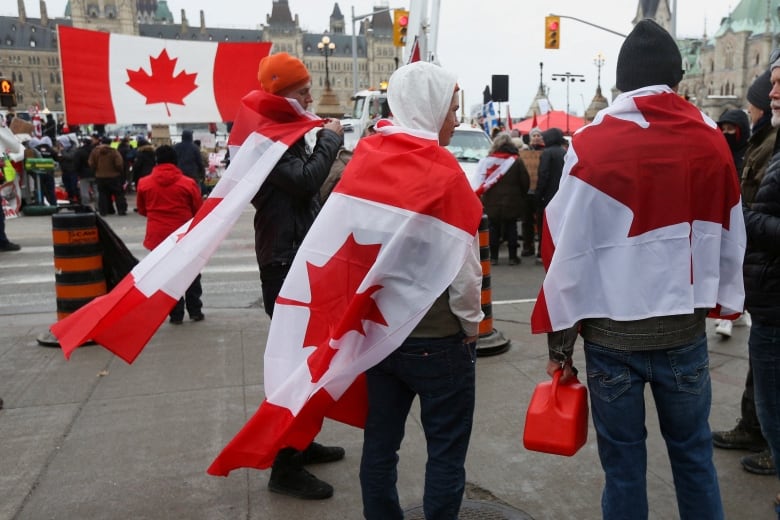
Ideas53:59O Canada: Joyce Wieland and the Art of Nationhood
“Canada can either now lose complete control — which it almost has, economically, spiritually and a few other things — or it can get itself together.”
Artist Joyce Wieland spoke these prescient words in 1971. They could just as easily have been spoken today. As Canada reckons with questions of national identity — about our languages, Indigenous reconciliation, U.S. relations and the environment — the artist’s work and words form a clarion call.
Wieland, who died of Alzheimer’s disease in 1998 at 67, was a celebrated and courageous Canadian multimedia artist who worked in paint, film, sculpture, textile — and everything in between.
“I think Joyce Wieland is one of the most powerful forces that this country has produced in the 20th century,” Art Gallery of Ontario curator, Georgiana Uhlyarik told IDEAS. “She created, in some ways, the most joyful, hilarious, powerful, biting, difficult works of art.”
‘True Patriot Love’
Wieland’s work takes on new meaning as Canada’s identity continues to shift, and Uhlyarik is planning an exhibition to highlight the artist’s relevance once again.
The AGO will mount a Joyce Wieland retrospective in 2024. In 1987, Wieland became the first living woman to have a solo exhibition at that gallery.
She was accustomed to firsts.
She was already the first living female artist to have a solo exhibition at the National Gallery of Canada in Ottawa, held in 1971.
The opening on Canada Day, then known as Dominion Day, was an extravaganza — there was a 100-piece marching band, live ducks and a giant Arctic Passion Cake, a 1.67-metre iceberg-shaped cake.
Impossible to miss were Wieland’s signature Canadian flags. Then still a nascent symbol, Wieland stuffed, stitched and stretched the red maple leaf and its meaning.

The exhibition was called True Patriot Love, and the theme was Canada itself.
On the surface, some of the works could be misconstrued as fluff. In truth, this was Wieland tackling the most pressing questions of nationhood and what it means to be Canadian. She did so with her signature humour, going so far as to create a fragrance for the occasion: Sweet Beaver, the Perfume of Canadian Liberation.
What she does is insist upon viewers realizing that here is Canada presented through a distinctly feminist and feminine lens. She made Canada female.– Brian Foss, art history professor
Reactions in the press were divided. Some critics saw the perfume-infused event, with its cake and ducks and hanging quilts, as an egregious, childish watering down of the esteemed National Gallery.
“Some of the newspaper critics were quite vicious and misogynist,” noted Johanne Sloan, art historian at Concordia University. “One of the Ottawa papers had a headline that was something like, ‘Joyce the housewife brings her cushions and blankets into the gallery.'”
What the naysayers failed to recognize was that by incorporating what were considered women’s craft practices into her work, Wieland was doing something revolutionary — and radically transforming Canadian art.
“It was a challenge to the ‘Old Boys Club’ in a very profound way,” Sloan said.
Feminist nationhood
Among the many artworks mounted on the gallery walls was Wieland’s iconic 1970 lithograph, O Canada. The gridlike work, with its 68 repeated red lips, highlighted at least two of the artist’s major themes: womanhood and nationhood. To create O Canada, Wieland applied red lipstick to her lips and proceeded to press her lips to the lithographic stone again and again as she sang the national anthem.
“She is quite literally stressing the physicality of nationalism — that it’s not some abstract concept, but that it affects real bodies in real time,” explained Brian Foss, professor of art history at Carleton University.
“And more specifically, I think what she does is insist upon viewers realizing that here is Canada presented through a distinctly feminist and feminine lens. She made Canada female.”

Wieland created her ’60s and ’70s flag and anthem-inspired works at a heady time in the country’s history. Both the red maple leaf and O Canada were new official national symbols.
In 1967, Canada celebrated its centenary with Expo 67, the world’s fair, in Montreal. Yet public expressions of Quebec nationalism, growing since the early 1960s, came to a head with the FLQ crisis in October 1970 and Pierre Trudeau’s invocation of the War Measures Act. Questions of national identity swirled across the country and Wieland responded to all of these in her art.
Wieland’s works were also a stark warning: Canada needed to be protected from the encroaching influence of the United States. It needed to protect its distinct national identity, culture, environment and natural resources. Two of her most well-known works brought these subjects into stark relief.
Her much-lauded experimental film, Rat Life and Diet in North America (1968), tells the story of a group of rats (in fact, pet gerbils) held as political prisoners in a highly militarized United States by their cat oppressors. The rat-gerbils eventually escape to Canada where they become farmers. Wieland created the work during the Vietnam War, and the references are evident.

Wieland’s 1970 work, Water Quilt, pulled viewers in with its surface beauty — a large quilt consisting of 64 small square pillows, each covered by a finely embroidered Arctic flower on a cotton flap. Hidden beneath each delicate flap was a darker message: an excerpt from James Laxer’s 1970 book, The Energy Poker Game, which warned against selling off Canada’s natural resources to the United States.
“It’s this suspension of tension that Wieland is able to bring to her work,” Uhlyarik said. “On one hand, it’s a beautiful, almost decorative patchwork of flowers … And yet underneath it is such an urgent, critical message about water.”
Water. Women. National identity. Wieland’s messages continue to hold power. The Ottawa convoy protests of January-February 2022 took over Elgin Street, where Wieland’s flag-filled exhibition opened in 1971.

“I think that Wieland’s meaning and importance in the wake of the so-called Freedom Convoy, her lessons are really germane,” said Foss.
“Her insistence on inclusivity as a core element of Canadian citizenship or Canadian-ness was at odds with this convoy idea. Joyce Wieland wanted a Canada in which everyone was valued. Where difference was a good thing, not a bad thing.”
A call for active citizenship
Wieland offered Canadians a vision of what the country could be. Her works were at once celebratory and a warning — a gesture for Canadians to embrace a nationalism that was neither chauvinistic nor militaristic, but inclusive and beautiful.
“I think it’s up to every individual,” said Sloan, “to try to determine what it is that they are standing up for when they salute the flag or when they sing the anthem. And Wieland was calling that into question. She was not taking it for granted that if you make those sounds with your mouth that you’re necessarily buying into the officially sanctioned governmental version of nationalism.
“And it’s a genuinely utopian idea that by citizens seizing hold of the flag themselves, that they can be part of that process of building a new Canadian nation. It’s a way of encouraging, in a sense, other Canadians, too, to not be passive in their citizenship or in their nationalism.
“And 50 years later, we see that this kind of critical thinking about nationhood is as necessary as ever.”
Guests in this episode:
Brian Foss is professor of art and architectural history at Carleton University in Ottawa. His research and teaching focus on the history of Canadian art, as well as on the representation of war in the visual arts. He is the author of the Art Canada Institute e-book, Homer Watson: Life & Work and War Paint: Art, War, State and Identity in Britain 1939-1945. He is also one of the three editors of Canadian Art in the Twentieth Century.
Mayo Graham was the founding director of the Ottawa Art Gallery (1988-1993), chief curator at the Montreal Museum of Fine Arts (1993-98), and ultimately, associate director (national outreach and international relations) at the National Gallery of Canada (1998-2009) until her retirement. In 1975, she curated the exhibition, Some Canadian Women Artists at the National Gallery of Canada.
Luis Jacob is a Peruvian-born, Toronto-based artist whose work destabilizes viewing conventions and invites collisions of meaning. He has achieved an international reputation with exhibitions in 2019 at the Museum der Moderne Salzburg, Austria; Württembergischer Kunstverein Stuttgart, Germany; and the Toronto Biennial of Art.
Johanne Sloan is a professor in the department of art history at Concordia University in Montreal. She is the author of numerous texts about Wieland, including the book Joyce Wieland’s The Far Shore (University of Toronto Press, 2010), and the Art Canada Institute e-book Joyce Wieland: Life and Work (2014). Most recently, she co-edited a special issue of the Journal of Canadian Art History (2020) on the artist.
After working with Wieland, Judy Steed was a feature writer at the Globe and Mail and the Toronto Star. She is the recipient of four National Newspaper Awards and one National Magazine Award, and the author of five books, including the national bestsellers, Ed Broadbent: The Pursuit of Power and Our Little Secret: Confronting Child Sexual Abuse in Canada. She currently leads ongoing mindfulness meditation sessions.
Georgiana Uhlyarik is Fredrik S. Eaton curator of Canadian art at the Art Gallery of Ontario. As co-lead of the AGO’s department of Indigenous + Canadian art, Uhlyarik’s area of specialty is the work of 20th-century women artists. She has co-curated exhibitions of the work of Kathleen Munn, Georgia O’Keeffe, Suzy Lake, Kenojuak Ashevak and Rita Letendre, among many others. Along with Anne Grace, curator of modern art, at the Montreal Museum of Fine Arts, she is co-organizing a career-spanning retrospective of Wieland for 2024.
*This IDEAS episode was produced by Alisa Siegel.
Special thanks to the Clara Thomas Archives & Special Collections at York University Library for the use of two images: ASC34381 | Joyce Wieland ‘O Canada Animation’ and ASC34400 | Joyce Wieland ‘109 Views”; the Canadian Filmmakers Distribution Centre, Patrick Alexander, Bob Rempel, and Kate Zieman at the CBC Research Library.












